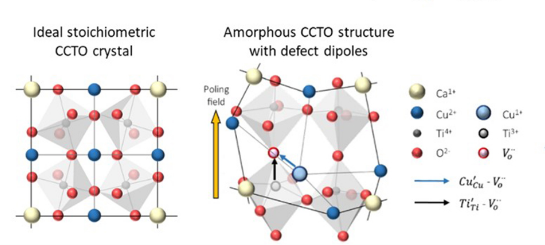A Technology for Ultra-High Efficiency Energy Conversion Material Obtained by Bending
A Technology for Ultra-High Efficiency Energy Conversion Material Obtained by Bending
Development of thin film energy material technology based on direct deposition on bendable plastic substrate
Independent operation of electronic devices with the best piezoelectric energy production capability
A research team led by Professor Yong Soo Cho of the Department of Materials Science and Engineering developed an ultra-high efficiency electrical energy conversion device that outperforms conventional materials. This material is made of a thin oxide film with a perovskite crystal structure on a plastic substrate, and is produced by a simple deposition process at room temperature without heat treatment.

Based on the specific crystal structure of the material, the research team used piezoelectricity, which converts an externally applied force into electrical energy. In the process, they successfully developed a flexible film-type energy device containing an amorphous CaCu3Ti4O12 film. The team confirmed the highest level of energy output (maximum voltage = 38 V; and power density = 2.8 × 106 mW/cm3).
The research team proposed internal defects and a crystal structure mechanism to prove the amorphous film properties. Through this, they successfully implemented the piezoelectric conversion output with the world's highest performance.
Conventional ceramic materials require a high-temperature heat treatment process above 700 °C to exhibit piezoelectricity. This had the disadvantage of limiting the type of substrate and the type of external force applied. However, in this study, the research team was able to skip the high-temperature heat treatment process. Therefore, a film could be deposited directly onto a bendable plastic substrate at room temperature, and a wide range of forces could be applied, overcoming the previous disadvantages.
The research team skipped the heat treatment process, overcoming the limitations of conventional ceramic film-type energy devices, and implemented a high-performance harvester device that exhibits the highest level of piezoelectric output by using the bending of the flexible device. This technology can be specifically used for self-powered devices that use independent energy sources without an external power supply.
"We have confirmed the world’s highest level of piezoelectric energy conversion characteristics in an amorphous film-based flexible piezoelectric device, which has not been reported before, and proposed a crystal structure mechanism to support it, which is a remarkable achievement that can be widely applied to other flexible electronic devices," said Professor Yong Soo Cho.
Researchers Ju Han and Sung Hyun Park from the Department of Materials Science and Engineering are the first co-authors of the paper, researcher Ye Seul Jung is a contributing author, and Professor Yong Soo Cho is the corresponding author. The results of this study were published online on May 16 in Nature Communications, a prestigious journal in the field of natural sciences.
This research was supported by the Korea Research Foundation's Mid-Career Researcher Support Program and Future Materials Discovery Program.
Find out more
Title of article: High-performance piezoelectric energy harvesting in amorphous perovskite thin films deposited directly on a plastic substrate
DOI: https://doi.org/10.1038/s41467-024-48551-3
Journal: Nature Communications
Contact corresponding author: Prof. Yong Soo Cho (ycho@yonsei.ac.kr)
Recommended Articles
Professor Jong-Hyun Ahn
Novel technique for producing high-resolution micro-LED displays
Professor Seong Chan Jun
Professor Donghyun Kim
Array of hope: Up close and personal with mitochondria in neurons